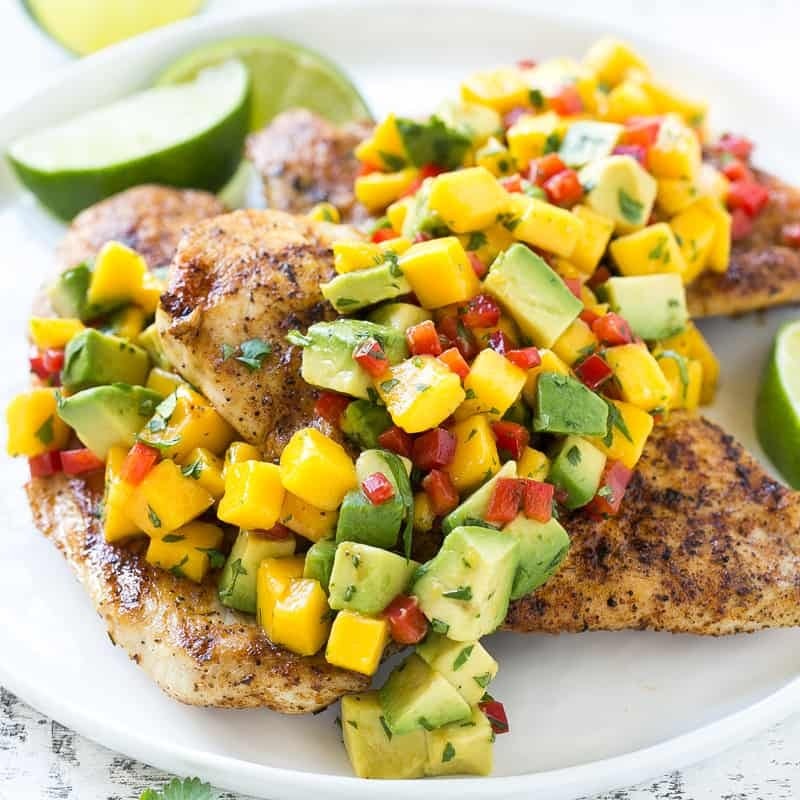Hey fitness nerds!
Thank you all {{active_subscriber_count}} of you!
We all scroll through perfectly curated feeds every day, but have you considered how these images might be altering your perception of your own body?
Research shows that just 30 minutes of social media use can negatively impact how people feel about their appearance. The relationship between our digital lives and body image runs deeper than most realise.
Read 🔽 below!
📱
IN LESS THAN 10 MINUTES WE WILL COVER:
Weekly Insights:
The Impact of Social Media on Body Image
Article Explained Simple: Are Organic Foods More Nutritious Than Normal
Top 3 Restaurant Dinners with Low Calories (Excluding Salad)
Mango Avocado Salsa with Grilled Chicken Recipe
Unwind Naturally with Enhanced Relief Gummies
Feel the calm set in with these Enhanced Relief Gummies—crafted with 5mg THC + 75mg CBD for stress relief, reduced anxiety, and deep relaxation without the hangover.
Perfect for evenings when you need to truly unwind. Get 25% off your first order with code RLX25 and experience why this brand has over 48k 5-star reviews.

Social media has fundamentally changed how we view ourselves and others.
The average person spends nearly 2.5 hours daily scrolling through platforms filled with edited, filtered, and carefully selected images.
This constant exposure has profound effects on how we perceive our own bodies.
Studies show that higher social media usage directly correlates with increased body dissatisfaction, especially among young adults and teenagers.
Platforms like Instagram and TikTok present an endless stream of idealised bodies that appear to represent everyday reality but are far from it.
The mechanisms behind this negative impact are complex.
First, there's the comparison trap. We naturally compare ourselves to others, but social media intensifies this tendency.
When we compare our unfiltered reality to someone else's highlight reel, we inevitably come up short.
Research from the University of Pennsylvania found that limiting social media use to just 30 minutes daily significantly reduced feelings of loneliness and depression.
Then there's the algorithm effect. Social media platforms are designed to keep us engaged, often by showing content that triggers strong emotional responses.
If you briefly linger on fitness or beauty content, your feed quickly fills with similar posts, creating an echo chamber that reinforces narrow beauty standards.
The filter phenomenon presents another challenge. Advanced editing tools and filters have normalised digitally altered appearances.
A 2023 study found that over 90% of young women use filters to edit their photos before posting, while 71% compare themselves unfavorably to filtered images of others.
Many users don't even recognise heavily edited images anymore, creating distorted perceptions of what's realistic.
Perhaps most concerning is the rise of body checking behaviours – repetitive actions aimed at examining one's size, shape, and weight.
Social media not only normalises these behaviours but often celebrates them through "transformation" posts and before-and-after comparisons.
Certain fitness and wellness communities can inadvertently promote unhealthy obsessions with physical appearance under the guise of health.
But not all social media influence is negative.
The body positivity movement has gained significant traction, promoting acceptance of all body types and challenging traditional beauty standards.
Many influencers now showcase unfiltered content, discussing the reality behind seemingly perfect photos and promoting more authentic representation.
How can we protect our body image while still enjoying social media?
Start by auditing your feed. Unfollow accounts that make you feel inadequate and seek out content that celebrates diversity and authentic representation.
Set boundaries around your social media use. Consider time limits, app blockers, or designated phone-free periods.
Practice critical consumption. When viewing content, actively remind yourself about editing, selective posting, and the commercial motivations behind many posts.
Create IRL connections. Strengthen in-person relationships that provide authentic interaction and validation beyond likes and comments.
For parents, having open conversations with children about social media's constructed nature is essential.
Teaching young people to question and analyse digital content builds crucial media literacy skills.
Remember that perfection isn't real – not in social media and not in life.
True wellness encompasses physical, mental, and emotional health, not just achieving a certain aesthetic.
By approaching social media mindfully, we can enjoy its benefits while protecting our body image and self-worth.

Fitness and health enthusiasts - We have a lot of things in store for you!
Check out busybody.io - and join the waitlist for our brand-new AI health app.
Article of the Week
Article Explained Simple: Are Organic Foods More Nutritious Than Normal
This study examined whether organic foods offer superior nutritional benefits compared to conventionally grown foods.
The researchers analysed multiple studies and found mixed results regarding nutritional content.
While some organic foods showed higher levels of certain antioxidants and lower levels of pesticide residues, the differences weren't consistently significant enough to definitively claim organic foods are more nutritious overall.
The most substantial benefit of organic foods appears to be in the reduced exposure to synthetic pesticides, which may have long-term health implications, though more research is needed.
The study concludes that while choosing organic foods may offer some health advantages, the nutritional differences alone may not justify the higher cost for everyone. Individual priorities around environmental impact, pesticide concerns, and budget should guide consumer choices.
Fascinating Fact:
Organic farming practices can lead to 40% more biodiversity on farms compared to conventional methods, potentially creating more resilient agricultural systems even when nutritional differences in the food itself are modest.
We have also started a referral program where you can earn prizes for referring your friends to this newsletter.
What other topics do you want me to write about?
Top 3 Restaurant Dinners with Low Calories (Excluding Salad)

Chipotle Burrito Bowl
Skip the tortilla and opt for a bowl with cauliflower rice to immediately cut about 300 calories.Choose chicken or sofritas (tofu) as your protein, and load up on fajita veggies, pico de gallo, and salsa.
Ask for light or no cheese and skip the sour cream and guacamole (or get it on the side to control portions).
This customised bowl comes in around 400-450 calories while providing a balanced, satisfying meal with approximately 30g of protein.
Olive Garden Herb-Grilled Salmon
Most chain restaurants now offer grilled fish options that are significantly lower in calories than pasta dishes.Olive Garden's Herb-Grilled Salmon comes with parmesan-crusted zucchini and is only 460 calories.
Request steamed broccoli instead of the parmesan zucchini to lower the calories even further while increasing the fibre content.
The high protein content (43g) helps keep you full, making this a surprisingly diet-friendly option at a restaurant known for its unlimited breadsticks and pasta.
P.F. Chang's Buddha's Feast (Steamed)
This vegetable-forward dish features a colourful array of steamed snap peas, broccoli, carrots, and mushrooms with tofu in a light sauce.At just 260 calories per serving, it's one of the lowest-calorie options you'll find at a sit-down restaurant.
Add a side of brown rice (150 calories per small portion) if you need more substance, and you'll still stay under 500 calories total.
The high fibre content makes this meal more filling than the calorie count might suggest, and the steamed preparation maintains more nutrients than fried alternatives.
Vote below to choose the diet for next week’s recipe
Mango Avocado Salsa with Grilled Chicken Recipe (makes 4 servings)
This bright, tropical dish combines lean protein with fresh produce for a nutrient-dense meal that's perfect for warmer weather.
The sweet-spicy-creamy combination is incredibly satisfying without weighing you down.
This recipe was created in 2 minutes with the BusyBody App. Click the button for free access to the app.

Macros per serving
Total Calories: 320 kcal
Protein: 29 g
Carbohydrates: 25 g
Sugars: 16 g
Fat: 12 g
The Ingredients
For the chicken:
4 boneless, skinless chicken breasts (150g each)
2 tablespoons olive oil
2 cloves garlic, minced
1 tablespoon lime juice
1 teaspoon ground cumin
1/2 teaspoon paprika
1/2 teaspoon salt
1/4 teaspoon black pepper
For the mango avocado salsa:
2 ripe mangoes, diced
1 large avocado, diced
1 small red onion, finely chopped
1 red bell pepper, diced
1 jalapeño, seeds removed and finely diced
1/4 cup fresh cilantro, chopped
2 tablespoons lime juice
1 tablespoon olive oil
Salt and pepper to taste
Instructions
Prepare the chicken marinade by combining olive oil, garlic, lime juice, cumin, paprika, salt, and pepper in a bowl.
Place the chicken breasts in a shallow dish or ziplock bag and pour the marinade over them, ensuring they're well coated.
Let marinate for at least 30 minutes, or up to 8 hours in the refrigerator.
While the chicken marinates, prepare the salsa by combining the diced mango, avocado, red onion, bell pepper, jalapeño, and cilantro in a medium bowl.
Drizzle with lime juice and olive oil, then season with salt and pepper. Toss gently to combine. Cover and refrigerate until ready to serve.
Preheat your grill or grill pan to medium-high heat. Remove the chicken from the marinade and grill for 5-7 minutes per side, or until the internal temperature reaches 165°F (74°C).
Let the chicken rest for 5 minutes before slicing.
Serve each sliced chicken breast topped with a generous portion of the mango avocado salsa.
This dish pairs well with cauliflower rice or a simple green salad for a complete meal. The salsa can be made up to 2 hours ahead, though the avocado may start to brown if prepared too far in advance.
Make your dream of working online a reality and start a newsletter - join beehiiv for free and don’t pay any renewal until you grow your subscriber base >2500 subscribers.
I’ve personally tried plenty of other platforms and Beehiiv is hands down the best and easiest to use.


